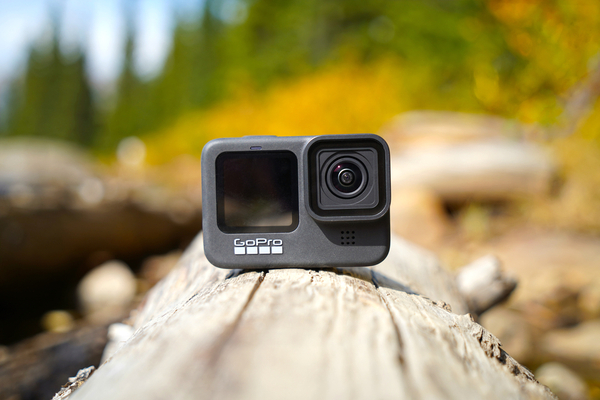GoPro has announced the next version of its action camera, which has a new processor that lets the camera shoot in higher frame rates (for that cool slow-motion footage), have better stabilization, and automatically upload videos to the cloud while charging. The new processor also works to make using the GoPro Hero 10 Black a faster, more responsive experience.
In a lot of cases, the Hero 10 can shoot at double the frame rate of the Hero 9: it can now shoot at 5.3K at 60 frames per second (offering both the frame rate improvement as well as a small resolution bump) and can shoot at 4K120, and 2.7K240. While 240fps is still as “slow” as the camera will get, it’s now able to shoot that frame rate at 2.7K, versus the 1080 resolution limit of the GoPro Hero 9.
GoPro says this increase in performance is due to the camera’s new GP2 processor, which is a successor to the GP1 chip it’s used in cameras ever since the Hero 6 Black. The company continuing to have custom chips for its cameras is a tactic that makes sense, as some of GoPro’s toughest competition comes from the smartphone market, where companies like Apple and Google are taking the same approach. The GP2 also allows the Hero 10 to be phone-like in a few ways, from its very responsive touchscreen to the heavy video processing that it’s doing with things like local tone mapping and improved noise reduction.
Arguably, though, one of the most smartphone-esque features is the camera’s ability to upload videos to the cloud while it’s charging. However, doing so will require a GoPro subscription, which is $5 a month or $50 a year. The subscription also gets you $100 off the camera, bringing its price of $499 down to $399, and it also includes access to GoPro’s damaged camera replacement program. The launch price, though, represents the slow creep up of the cost of GoPro’s cameras — without a subscription, the Hero 9 cost $450 at launch, which was itself up from $399 with the Hero 8. This year, of course, there’s also the possible factor of the ever-present chip shortage.
For those who don’t want a subscription, it’s also easier to get footage off the camera with your smartphone. GoPro says the new chip makes wireless transfers to its app 30 percent faster, and there’s also a new option to transfer your footage with an honest-to-goodness cable for those really looking for reliable, fast offloading.
The new camera also comes with a few smaller improvements that make it more appealing. The camera’s “horizon leveling” feature, where it tries to keep the horizon as a straight line, lets the camera tilt up to 45 degrees before the sky starts moving, compared to the 27 degrees from the Hero 9. Unfortunately, the improved horizon leveling isn’t available on the camera’s highest resolutions and frame rates, as it’s limited to 4K at 60 frames per second and 2.7K or 1080 at 120.
The still photos the camera takes are also getting a resolution bump, from 20MP to 23MP, with still frames pulled from video reaching 19.6MP when shooting in the camera’s 5K 4:3 mode and 15.8MP when shooting in the 5.3K60 mode. GoPro also says that a new generation of its HyperSmooth stabilization feature can be used while you’re streaming live — though getting the highest video quality from your streams will also require a GoPro subscription.
If you had a Hero 9 and bought some of GoPro’s Mod add-ons, the company says most of them should be compatible — including the Max Lens Mod, though support for it will be coming in a future software update. Even the stock lens gets a bit of improvement, though, with GoPro saying that it should repeal water easier and be harder to scratch. And, of course, it’s still removable.
—
Photo Credit: Gabe Shakour / Shutterstock.com
